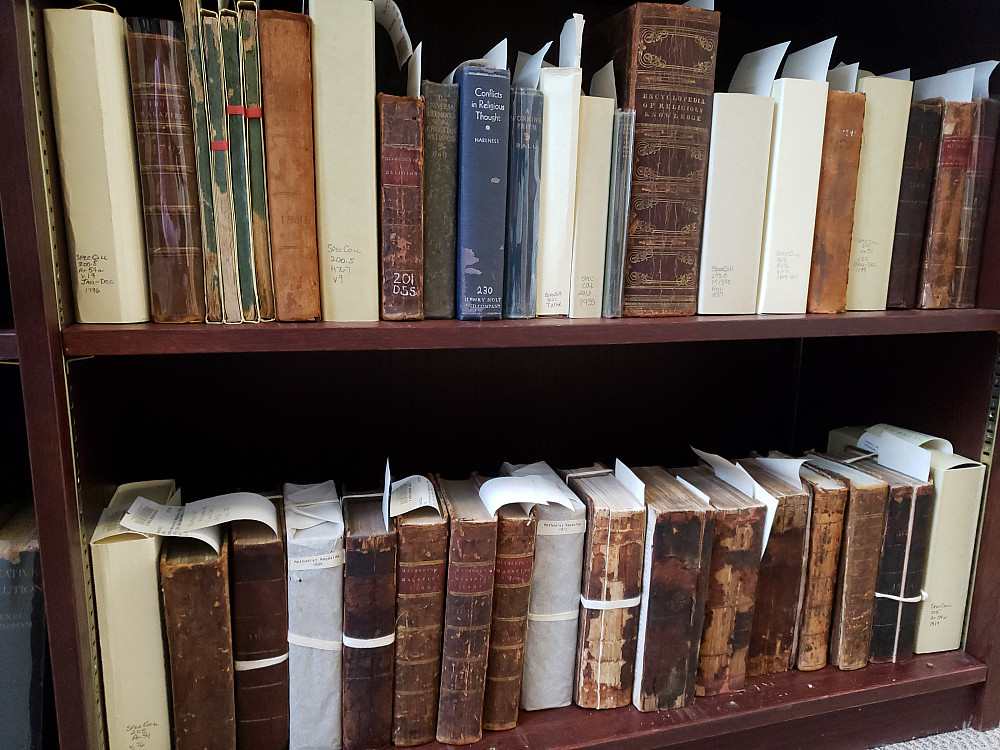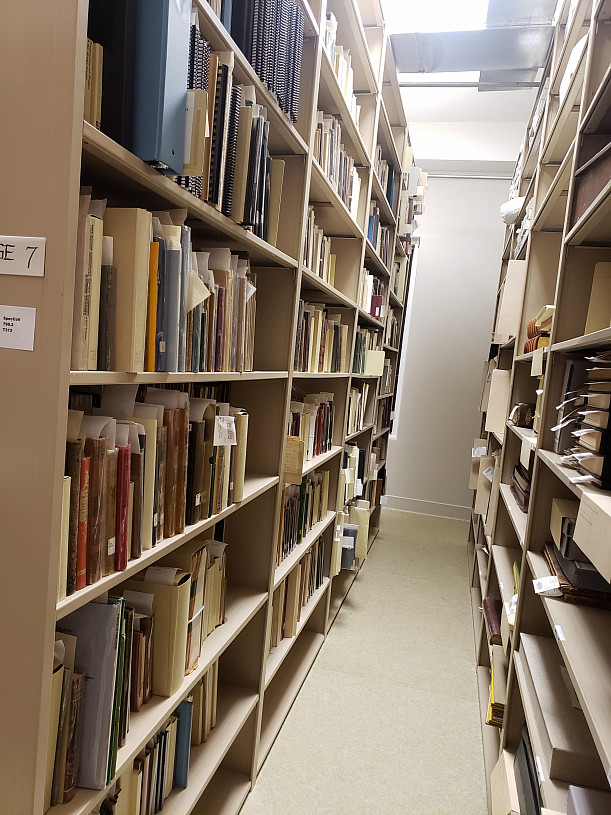Open gallery
Book as Artifact, Artifact as Book
An Independent Study
by Jax De La Cruz-Luera ’20
As a history major and student worker at Southwestern’s Special Collections & Archives, I spend most of my school days reading and researching in historical texts, and my days at work caring and preserving original copies of important and special items, including some of the very books I utilize in my own research. Sounds kind of boring I know. I get that this may not feel like everyone’s idea of fun, but, while spending day in and day out pretending like I’m Indiana Jones unlocking clues to the past hidden deep within these books, a question crossed my mind that I have never been able to quite satisfy:
Which books do we keep for research purposes and information, and which books do we keep because they’re rare and unusual?

Furthermore, what makes a book rare or unusual? Most books that are mass produced today are hardly rare, and even special editions are one online click away from arriving crisp and new on the doorstep in just a few days. The idea of owning the only copy of a book, or one of the only remaining copies, is almost as foreign to us as the distant cultures that produced these historical works; yet, that is where my time in Special Collections has allotted me the opportunity to become more intimate and familiar with these materials, and I could not be more excited to share these findings with the rest of my peers and future colleagues.

This independent study will be layered, with different stages delving deeper into what makes a book an artifact, or an artifact a book. I will first take a look at early printed books as opposed to written manuscripts. I will discuss the materials they are composed of and new developments in bookmaking, how these books were produced and who they were intended for, and what historical purpose do they serve for us today. Next and more specifically, I will be producing an inventory of the pre-1700 books and documents that Southwestern’s Special Collections & Archives holds in their collection, and what makes these documents rare and special enough to warrant a space in the collection. This may prove to be a little difficult considering the amount of materials that Special Collections holds, and I will be discussing both my successes and obstacles that are involved in producing an inventory in this manner. Finally, I will conduct more in-depth research on a few of the items found in the inventory to discover how these documents changed the world in which they were produced, and how they influence the way in which we access the past today. Sometimes, it is necessary to read the text of a book to understand the past, but sometimes, the answers to our questions about our history are hidden beyond the text, in the very pages and ink of the book.















